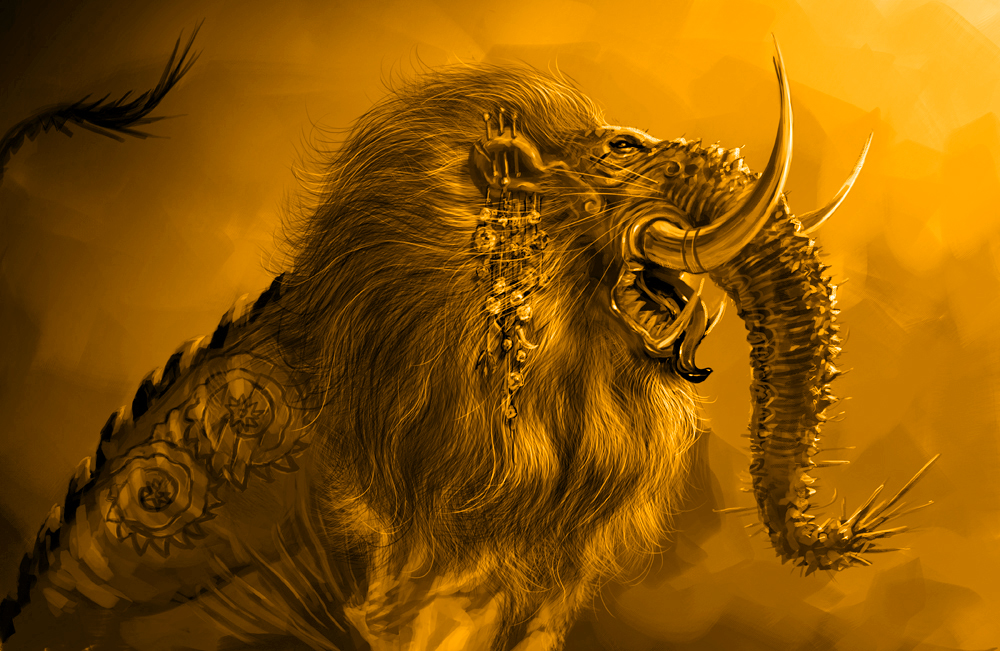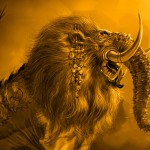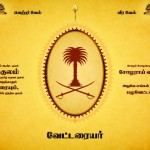WHO ARE PAZHUVETTARAYARS ?
PAZHUVETTARAYARS – The name that holds a discrete history and can never be separated from the great Chola dynasty. Only the Pazhuvettarayar clan was given the prominence and sovereignty to rule the area under the bigger umbrella of Chola Empire with their own solitary flag and emblem. They are said to be one of the Royal families of Cheras. The Royal families (Naaduvaazhi Families) together comprises the Royal Cheras.
The Pazhuvettarayars and The Cholas had a good camaraderie with each other even before the re-emergence of Cholas as a supreme power. King Vijayaalaya Cholan and King Kulasekara Kandan Pazhuvettarayar were boon companions since their early life. They joined together and fought in the battle against Mutharayars. Their legs were pierced by enemy’s poisoned arrow and affected as paralyzed legs.
The first relationship was engendered between the Cheras and the Cholas by the nuptial of Rajakesari Aditya Cholan I (Son of King Vijayaalayan) and Kokkilanadigal I (Niece of King Kulasekara Kandan Pazhuvettarayar and Daughter of Cheramaan Sthanu Iravi Veera Ragava Pazhuvettarayar).
The Royal Family of Cheras ruled up to 885 AD to be able to become the junior partner in Rajakesari Aditya Cholan’s wars in Kongu Nadu.
In Thiruppurambiyam Battle, the brothers Kulasekara Vikrama Pazhuvettarayar and Kandan Amudhan Pazhuvettarayar joined forces with the Chola King Vijayaalayan, in honouring the words of their father Kulasekara Kandan Pazhuvettarayar and his friendship with Vijayaalaya Cholan.
Battle of Thirupurambiyam was fought between the Pandya king Varagunavarman II and a confederacy of the Pallavas, Western Ganga Dynasty and the Medieval Cholas in about 879 CE near modern-day Kumbakonam. The Pandyas lost the battle.
The battle is considered to be a turning point in the history of South India for it precipitated the fall of the Pallava and Pandya kingdoms and triggered the re-emergence of the Chola power in history after centuries of obscurity during Kalabhra rule. The Pazhuvettarayar brothers Kulasekara Vikraman and Kandan Amudhan lost their life in the battlefield after earning victory to their ally.
On seeing the assiduity, dedication and diligence of Pazhuvettarayars in the Battle of Thiruppurambiyam, which paved a vital part in re-emergence of Cholas to be back with power in history, the Chola King Vijayaalayan wanted to have an inseparable strong bond with Pazhuvettarayars till the existence of his last successor.
Here history records the first official blood relationship tie that binds Pazhuvettarayars with Cholas, by the marriage of Prince Paraanthagan I (Grandson of King Vijayaalayan and Son of Rajakesari Aditya Cholan – Kokkilanadigal I) with Princess Kokkizhaanadigal II and Princess Arulmozhi Nangai (Daughters of Kandan Amudhan Pazhuvettarayar and Sisters of Vikrama Kandan Amudhan Pazhuvettarayar).
From the Thillaisthanam inscription (Tanjore) – a single granite slab on the south wall of the central shrine in the Ghrithasthaneshwara Temple, Thillaisthanam, we get the following information:
Hail Prosperity!
The wife of Rajakesari Adityan, who was honoured by the King Kandan Rajakesari Varman, who was the possessor of several elephants [“tondai-nadu-pavina-cholan-pal-yanai-ko-kandan”] and by the Cheraman Ko Tanu Iravi, with [the privilege of using] the seat [of honour], the chauris, the palanquin, the drum, a palace [royal] dinner [participation in it perhaps] and the bugle and [who was presented] with a battalion of elephants and the hereditary title of Sembiyan Tamilavel – Kadamba Mahadevi gave to the god Mahadeva at Tiruneyyttanam a perpetual lamp, for which the number of sheep given by her is a hundred.
My these [charities] be under the protection of the several mahesvaras.
– Travancore Archaeological Series (Volume II)
The Chola Prince Rajadityan is the son of King Paraanthaga Cholan I – Kokkizhaanadigal II. He died in Thakkolam War.
King Paraanthaga Cholan I’s another son Prince Kandaradityan is married to VeeraNarayani I (Princess of the Naaduvaazhi Families, The Royal Cheras) and Sembiyanmaathevi (Mazhavarayar Princess)
The Chola Prince Arinjeyan is the son of King Paraanthaga Cholan I – Arulmozhi Nangai. He is married to Kalyani (Princess of the Naaduvaazhi Families, The Royal Cheras and matrilineal niece to Arulmozhi Nangai)
King Arinjeya Cholan’s Son Prince Paraanthaga Cholan II (a) Sundara Cholan married Vanamaathevi (Malaiyaman Princess)
King Paraanthaga Cholan II (a) Sundara Cholan’s son Prince Arulmozhi (a) Raja Raja Cholan married Vanavanmadevi (Kodumbalur Princess). She died in her early life after giving birth to Prince Mathuranthaga Cholan II (a) Rajendra Cholan.
Later, Prince Arulmozhi (a) Raja Raja Cholan gets married to two of Pazhuvettarayar Princesses,
1. Ulagamadevi (a) Panchavanmadevi (a) Prithvimadevi (a) Lokamadevi (a) Trailokyamadevi (a) DantisaktiVitanki
and
2. Nakkanmadevi (a) VeeraNarayani II (a) Abimanavalli
(Both were daughters of Pazhuvettarayar Vikrama Kandan Amudhan (a) Kandan Sathrubayangaran and Sisters of Kulasekara Kandan Kumaran Pazhuvettarayar)
The Cholas had an inseparable relationship with Pazhuvettarayars. In result, many Chera places were given as a gift to Cholas respective of their marriage bond, gift to their direct heirs in various times. It is to be clearly understood, a part of the Royal clan of Cheras and the Cholas in their successive generations became directly blood related and can never define them separately. Because a part of the Royal families of Cheras became the direct heirs of the Cholas and the Cholas became the direct heirs of the Royal Chera families.
The reign of The Cheras is often misunderstood as today’s Kerala Region only. It is to be understood, that the entire tamil reign comprises of the Cheras, Cholas and Pandyas. Our today’s Karur, Coimbatore, Theni and few more districts of tamilnadu were once ruled by The Cheras. Today’s state separation was made mainly based upon the dialect of that region and it is not to be misunderstood with the dynasties.
INSCRIPTIONS
Pazhuvettarayars, overlord of Pazhur reign, were responsible for a number of benefactions to the temples at this place and were known to have been related to the Cholas by marriage, figures largely in the inscriptions copied at Keezhapazhur and Melapazhur.
We find our earliest references to the Pazhuvettarayar family in two inscriptions engraved on the walls of the Agastheeswarar temple in Keezhaiyur town.
The first one Dated in the 13th year of Rajakesarivarma Aditya I (A.D. 884), mentions Pazhuvettarayar Kulasekara Vikraman
The second, dated in the 22nd year of the same king (A.D. 893), refers to Nakkan Bhuti Pazhuvettarayan Kandan Amudhan. The two chiefs apparently were related to blood, and very possibly were brothers and sons of Pazhuvettarayar Kulasekara Kandan.
Inscriptions copied at Keezhapazhur and Melapazhur in the Tiruchchirappalli District A.R. No. 231 of 1926 dated in the 12th reginal year (A.D. 919) of Paraanthaga Cholan I, that Pazhuvettarayar Vikrama Kandan Amudanar fought, on behalf of his Chola overlord, a victorious battle at Vellur (Thakkolam) in A.D. 915 against the forces of the Pandya king and his Ceylonese ally, in which the Pandya lost his life.
To commemorate this success and in recognition of the valorous part he played in the historic battle of Vellur, the Commander Nakkan Sattan of Paradur made a gift of a perpetual lamp to the temple of Tiruvalandurai-Mahadeva at Siru-Paluvur. About a dozen records pertaining to this dynasty have been found.
Since Pazhuvettarayars had the tradition to bore the same title/name to their descendants in consecutive generations, there is uncertainty in defining the particular person and his period by inscriptions.
Alongside, it is of top notch to know which Pazhuvettarayar lived in the reign year of the particular Chola king. Only then it will be precise to correlate that with the person mentioned in inscription. “Only family known history” – the history carried in confidential words only within their families for centuries plays a vital part in understanding this correlation.
At this juncture, the 12th year of Paraanthaga Cholan I’s inscriptions can refer Pazhuvettarayar Vikrama Kandan Amudanar (Son of Kandan Amudhan Pazhuvettarayar), as he joined forces with Paraanthagan I in Thakkolam battle.
Reason being, after earning the glorious victory to their Cholan ally forces in Thiruppurambiyam battle, his father Kandhan Amudhan Pazhuvettarayar lost his life along with his elder brother Pazhuvettarayar Kulasekara Vikraman in the battlefield.
The Anbil Plates of Sundara Cholan refers to Kandan Amudhan Pazhuvettarayar (the one who lived in the period of Cholan Vijayaalayan), as a Chera king, whose daughter was married to Paraanthaga I and bore him Prince Arinjeya By ‘Chera prince’ should be meant a relation of the Chera king.
Pazhuvettarayar Kandan Maravan figures in two inscriptions, dated in the 4th and 7th years of Rajakesarivarma identified with Rajaraja Cholan I, and is also mentioned in two epigraphs of the 15th and 16th year of Parakesarivarman Uttama Cholan.
Similarly records are found of Pazhuvettarayar Kandan Kumaran covering about the same period in the 10th and 12th years of Rajakesarivarman Sundara Cholan and between the 9th and 15th years of Parakesari Uttama Cholan. It appears as though these two chiefs were sons of Pazhuvettarayar Vikrama Kandan Amudhan (Brother in law of King Paraanthagan I) and were brothers who are stated in a record of the 12th year of Parakesari Uttama Cholan from Udaiyargudi inscriptions.
Alanduraiyar temple has the inscriptions mentioning ‘Perumpazhuvur Pazhuvettarayar’, perhaps he may be Pazhuvettarayar Vikrama Kandan Amudhan. As per the inscriptions, this place was called as Brahmadeya Pazhuvur Alandurai, Kundra Kootram Uththunga Valanattu Sirupazhuvur and Lord Shiva was called as Alandurai Mahadevar.
An inscription of Parakesari Mathuraanthaga Uttama Cholan’s 8th reign year records the endowment of burning a perpetual lamp for which 90 sheep were given by Nambanai Adikal Pazhuvettarayar Kandan Maravan, 50 Kaasu were gifted by Perum Pazhuvur Adigal Pazhuvettarayar Kandan Maravan’s wife Veeranan Koviyar and 190 Kazhanju silver kalasam were together given by Pazhuvettarayar Kandan Maravan’s wife Veeranan Koviyar and his son Pazhuvettarayar Vikrama Kandan Amudhan.
King Rajaraja Cholan I’s 10th reign year inscription records the endowment of 2 Naazhi Thumbai Pallithamam Parichatham, by Kizhavan Adikal Pazhuvettarayar Kandan Maravanar Perunthirathu Arayan Sundara Cholan for which a land was gifted to this temple.
2 Naazhi Thumbai = 400 gms of Thumbai Flower
Pallithamam Parichattam is Garland made with Parichatham flowers.
An inscription here mentions that two of the queens of Raja Rajan I were Pazhuvettarayar Princesses. The inscription of the 27th reignal year of King Raja Raja Cholan, says that upon the request of his queens Panchavanmadevi and Nakkanmadevi, the daughters of Avani Kandarpapuratthu Devanar of Pazhur (King Vikrama Kandan Amudhan Pazhuvettarayar), the Chola King granted income from newly surveyed lands to the temple.
What is next known of the Pazhuvettarayar Maravan Kandan (perhaps a son of Vikrama Kandan Amudhan) whose ten inscriptions range in date from A.D. 961 to 984, then the name of his son Pazhuvettarayar Kandan Satrubhayangaran (a) Pazhuvettarayar Vikrama Kandan Amudhan, whose eight inscriptions fall between A.D. 984 and 1050. After Vikrama Kandan Amudhan’s son Pazhuvettarayar Kulasekara Kandan Kumaran, the Pazhuvettarayars had an declinature on par with the medieval cholas and are rarely mentioned in subsequent inscriptions.
PAZHUR – A Historical Outlook
PAZHUR = PAZHU + UR
Pazhu is Banyan tree
and
Ur means ‘town’ where there is the settlement of peasants
We could still see many Banyan trees in this place which gives us reason for the name of this place since ancient past.
Pazhuvettarayars ruled the present Keezhapazhur, Keezhaiyur and Melapazhur, in the Ariyalur taluk of Ariyalur District, during Chola kingdom. Both Melapazhur and Keezhaiyur were collectively known as Perum Pazhuvur, the capital of Pazhuvettarayars during the Chola reign.
At present, there are many temples in this region, which will make us to confer this village with a special name “Temple Village”. There are ancient temples in this place, has inscriptions dated back to 7th, 8th and 9th centuries, leaving us proof of its antiquity.
Pazhuvettarayars built temples are probably number only three; but a distinctiveness of idiom is clearly seen only in the earliest and most major of their undertakings, the twin temples at Keezhaiyur known in inscriptions as “Avanikandarpa-Isvara-grham.” These must be counted among the finest early buildings in Cholanadu style.
PAZHUR SHIVA TEMPLES
Pazhur region has Shiva Temple Complexes from the times of the Pazhuvettarayars and the Chola kings. The Pazhur Temples can be found in three sectors called Keezhapazhur (lower area on the east), Melapazhur (upper area on the west) and Keezhaiyur. Among the all temples in that region, here are three temples having more historical importance.
Keezhaiyur Twin Temple
Alanduraiyar Temple
Maravaneeswarar Temple
KEEZHAIYUR TWIN TEMPLE
Keezhaiyur Twin Temple is a Temple complex dedicated to Lord Shiva located in Keezhaiyur Village near Melapazhur in Ariyalur Taluk, Ariyalur District. The village has been popular as the capital of the Pazhuvettarayars.
The Temple complex consists of two temples. According to sources of Tamil Nadu State Department of Archaeology, the temples were excellent examples of the early Chola architecture. “In fact, these temples had been constructed prior to the construction of the Big Temple in Thanjavur,” say the sources. The State Archaeology Department has been taking special efforts for proper upkeep and maintenance of the temple which was built by the Pazhuvettarayars. Keezhaiyur Twin Temples accounts for a large number of inscriptions which are a storehouse of information of the hoary past.
KEEZHAIYUR TWIN TEMPLES was built with the unique style of temple architecture which comprises the Nagara Style (truly a northern ascendancy) and the Vesara Style (an idiosyncratic mix of Dravida architecture and Nagara architecture to produce one of a kind style)
Keezhaiyur Twin Temples was also called as AvaniGandarbaEswaram, meaning the place of direct sense medium between the gods and humans. This temple has also been the centre for promoting art and culture. “The temple has attached importance to music. This is evident from one of the idols on the Vimanam holding a musical instrument,” say the source.
An inscription from the time of Rajendra Chola mentions that provision was made for paying a ‘Nattuvakkani’ – dance master. From this and the idols here with musical instruments it is inferred that the Keezhaiyur Twin Temples played a role in the musical movement of that period and could have been a school of teaching arts and music.
This temple complex consist of two westward-facing Saiva Vimanas standing side by side. The Temple in the south is called as Thenvayil Sri Koil (Agatheeswaram) which is the larger and the main shrine of the group. The northern smaller one is called as Vadavayil Sri Koil (Chozheeswaram or Arunachaleswaram). The Agatheeswaram has a prakara with a small gopura co-axial with the main shrine.
The three tiers Rajagopuram of the Keezhaiyur Twin Temples is one of the oldest in Tamilnadu. The sculptural splendor here is beyond a regular look and requires a detailed observation. Of particular mention are the Nandis and the Shiva idol performing on a Veena. The architecture of southern shrine is Nagara and the architecture of the northern shrine is Vesara.
The presiding deity is Sri Agatheeswarar and Sri Abitha Kusalambal for the Agatheeswaram (Southern shrine), and Sri Chozheeswarar and Sri Manonmani for the Chozheeswaram (Northern shrine).
The inner sanctum or the sacred space, the garbhagriha or womb-chamber of Agatheeswaram is housed with Sri Agatheeswarar, the prime deity and Sri Abitha Kusalambal is placed in antarala, a small antechamber or foyer between the garbhagriha (shrine) and the mandapa. Same as Agatheeswaram, the inner sanctum or the garbhagriha of Chozheeswaram is housed with Sri Chozheeswarar, the prime deity and Sri Manonmani is placed in antarala.
UNLIKE ALL THE HINDU TEMPLES, this temple has no separate inner sanctum or the garbhagriha for the goddess Sri Abitha Kusalambal and Sri Manonmani, whereas, they are given place in a small ante chamber near to the inner sanctums of their discrete godhead.
This expound that, love is paramount for them; they always want to be with their consorts and they don’t even want to take the sight off from them even for an eye blinking time – Teaching us to have a conspicuous and unconditional love for our spouse.
In this temple complex, Thenvayil Sri Koil (Agatheeswaram) which is the main and larger shrine of the group, has an unique mandapam which lies between antarala and ardh mandapam.
Here in Agatheeswaram, the mandapam is uniquely crafted with Simha carvings at the bottom of granite stone pillars. These Simha sculptures are about 2 ft height from the ground, crafted with astonishing details. The Simha sculptures are in sitting position with carved pillars on their heads and are placed in order. The top of all pillars are affixed to bottom of the roof of mandapam, giving us an outlook that pillars are placed on to the heads of Simhas in sitting position in consideration to their strongest feet, for perfect balancing of the mandapam.
The Vadavayil Sri Koil (Chozheeswaram or Arunachaleswaram) has no mandapam like Thenvayil Sri Koil. The only mandapam it has is the ardh mandapam.
Although the temple is located at a prime junction, it is not visited. Efforts should be made for attracting pilgrims and history lovers to these temples, say a cross-section of epigraphists and research scholars.
The Twin Temple, Keezhaiyur has been declared as ‘PROTECTED MONUMENT’ under “THE MADRAS ANCIENT AND HISTORICAL MONUMENT AND ARCHAEOLOGICAL SITES AND REMAINS ACT, 1966”.
This monument, being a pride to our State/Nation, it is been taken under the control of Archaeological Survey of India, as ASI is responsible for archaeological research and the conservation and preservation of cultural monuments in the country.
ALANDURAIYAR TEMPLE
Alanduraiyar temple is located in Keezhapazhur village, Ariyalur Taluk, Ariyalur District. During Chola period, this place was called as Siru-Pazhuvur. Keezhapazhur, Keezhaiyur and Melapazhur together were called as Pazhuvur in ancient times. The place where the temple is located must have been called in epic time as Yogavanam, which is now called as pazhur.
Keezhapazhur’s Alanduraiyappar Temple finds mention in the hymns of Thevaram sung by Thirugnana Sambandar, the poet-saint of Tamil literature. The hymn says that the temple rituals were conducted by priests from Chera Naadu who settled down in this area. Legend says that Parasurama, the sixth incarnation of Lord Vishnu and creator of the land of Chera Desam, brought them to conduct the Poojas and rituals of Alanduraiyappar Temple. Some scholars say that the Pazhuvettarayars, who belonged to the land of Parasurama, may have encouraged their migration.
This is the 109th Thevara Paadal Petra Shiva Sthalam and 55th Shiva Sthalam on the north side of river Kaveri in Chola Nadu. Paadal Petra Sthalam refers to the temples that are the manifestation of the five elements – land, water, air, sky, fire.
In Sekkizhar’s Periya Puranam, it is recorded that Thirugnana Sambandar visited this temple after worshipping Lord Shiva at Thiruvarathurai. The describing words of Sekkizhar are,
மண்ணினில் பொலிகுல மலையர் தாம் தொழுது
எண்இல் சீர்ப்பணிகள் செய்து ஏத்தும் தன்மையில்
நண்ணிய வகைசிறப் பித்து நாதரைப்
பண்ணினில் திகழ்திருப்பதிகம் பாடினார்
– சேக்கிழார்
Below are the hymns sung by Thirugnana Sambandar at Alanduraiyappar temple,
முத்தன்மிகு மூவிலைநல் வேலன்விரி நூலன்
அத்தன்எமை யாளுடைய அண்ணல் இடம் என்பர்
மைத்தழை பெரும்பொழிலின் வாசமது வீசப்
பத்தரொடு சித்தர்பயில் கின்றபழு வூரே
– திருஞானசம்பந்தர்
The temple is facing east with a three tier Rajagopuram. The presiding deity of this temple is Sri Alanduraiyar. He’s also titled as Sri Vadamoolanathar and Sri Yogavaneswarar. His consort goddess is Sri Arunthavanayaki. She is also titled as Sri Yoganayaki and Sri Mahathabasvini.
The prime deity, Sri Alanduraiyappar was self – manifested in this place. Self manifest means self existing or that is created by its own accord. Often, the word Suyambhu, is used to describe a self manifested image of a deity, which was not made by human hands, but instead is naturally arisen, or generated by nature.
Since the prime deity of this temple is naturally arisen, he is small and always covered with armor. Since the prime deity is naturally elevated by mud, anointing is not performed instead loban oil only is applied.
The consort goddess Sri Arunthavanayaki is located in a sanctum at the east. A sanctum devoted for Lord Muruga is also in this temple.
In 15th century, Saint Arunagirinathar sang hymns in praise of Lord Muruga of this temple.
அகடு துஞ்சிட மூட்டு பாரத
முடிய அன்பர்க ளேத்த வேயரி
யருளு மைந்தர்கள் வாழ்த்து மாயவன் மருகோனே
அமர ரந்தணர் போற்ற வேகிரி
கடல திர்ந்திட நோக்கு மாமயி
லழகொ டும்பழு வூர்க்குள் மேவிய பெருமாளே
– அருணகிரிநாதர்
The sanctum sanctorum consists of inner sanctum, antarala and ardh mandapam. The Temple tower (Vimana) on the sanctum is of Vesara style architecture. The shrine is constructed in such a way that the rays of the Sun fall on this Lord on the 18th day of Tamil Month Panguni.
Unlike many of the Shiva temples having the entrance to the main shrine contains a Dwarabalagar image, here it shows Sage Parusuramar in Sayana (sleeping or lying) position.
Since Thirugnana Sambandar has sung hymns in praise of Lord Shiva of this temple, the original temple might have existed before 7th century.
This shrine was rebuilt in granite during the regime of Paraanthaga Cholan I. It contains inscriptions of the Emperor describing his victory at Vellur (Thakkolam) over the Pandyas. Another inscription of Parakesarivarman says that the temple was reconstructed by Pazhuvettarayar Maravan Kandan.
A third important inscription says that the temple originally built with bricks had to be rebuilt as it was facing ruin. It was rebuilt by Ilangesan during the period of Kulothunga Chola and renamed as Kulothunga Choleeswaram.
As per the conventional perceiving of inscription, Ambalavan Pazhuvur Nakkan figures very often in the records of the kings Parakesari and Rajakesari. His Chola overlords were Uttama Chola and Rajaraja I. Vikrama Chola was the title of Uttama Chola (a) Mathuraanthagan I, and his subordinate Ambalavan Pazhur Nakkan (Vikrama Kandan Amudhan Pazhuvettarayar) also bore the same title.
Similarly, when he figures in the records of Rajaraja-I, he is known as Ambalavan Pazhuvur Nakkan alias Pazhuvarayan and he figures as one of the noble men of the king’s council. He was a devotee of Lord Shiva.
A divergent perceiving of inscription rendered the following meaning:
“Ambalavan Pazhuvur Nakkan” may address the prime deity of the temple Lord Shiva. Let us see the below explanation for better understanding.
Ambalavan means “Ambalathin Arasan” in tamil
and
“Overlord of the Majestic cosmic dance halls” in english,
Pazhur is the name of the place where the temple is located,
Nakkan means “Mukkaalam Unarntha Gnani; Arugan; Sivan; Mutrum Thurantha Gnani” in tamil
and
“Sage who realized all the three seasons – past, present, future; Sage with three eyes – Lord Sivan; Absolutely renounced sage” in english.
This illustrates that the inscription at Ambalavan Pazhuvur Nakkan Temple refers to Pazhuvettarayar King Vikrama Kandan Amudhan, who lived in the reginal years of Sundara Cholan, Uttama Cholan and Raja Raja Cholan.
There were 23 inscriptions recorded from this temple and most of the inscriptions belong to Chola period. The inscriptions mainly talks about the endowment made by tangible and intangible resources for the purpose of sacred offerings to god, burning of lamps, sacred bath to god, prayers etc.
We are cited with the measurement methods in use by then period. These were the measurement terms used in inscribing the endowments in Alanduraiyar temple inscriptions.
- Grains in Naazhi
Naazhi is the smallest measuring vessel associated with rice-paddy system in Chera Nadu.
1 Naazhi is around 200g.
- Coins in Kazhanju and Kaasu.
10 Kundrimani = 1 Kazhanju
1.5 Kazhanju = 8 grams or One Sovereign
4 Kazhanju = 1 Kaasu
- Lands were measured in Ma
1 Kuzhi = 144 Sq.ft
1 Ma = 100 kuzhi = 14400 sq.ft
The inscriptions found in this temple are belonged to various reign period of medieval chola kings, since 8th century AD. Inscriptions of Kulothunga Cholan and Vijayanagara Dynasty are also found here.
MARAVANEESWARAR TEMPLE
Maravaneeswarar Mahadevar temple is dedicated to Lord Shiva located in Keezhapazhur village in Ariyalur Taluk, Ariyalur district of TamilNadu. The temple was built by Kulasekara Kandan Pazhuvettarayar, overlord of Pazhur, ruling over this area under the Imperial Cholas. The temple is also called as Alamantha Maravaneeswaram and Pasupatheeswarar Temple.
The Presiding deity of this temple is Maravaneeswarar Mahadevar. He is also titled as Pasupatheeswarar and his consort goddess is named as Oppanai Nayagi. The temple was in dilapidated condition. Nandi can be found facing the inner sanctum. Leaving with no traces to guess, here are two Nandis placed in a straight line facing the sanctum one after the other. The smaller sized nandi is placed close to the inner sanctum and following that is a bigger sized nandi.
Few broken sculptures can be found at the entrance of the sanctum. At present, A.D. 2021, there are no mandapas in this temple other than the inner sanctum. The wall of the inner sanctum is made up of granite slabs. Both inner side and outer side of granite slab is engraved with inscriptions.
Despite holding a discrete history of ancient past, why this temple is abandoned is really a wonder. Considering only the deteriorated condition of the temple, the main deity and his consort deity has been relocated from the inner sanctum to a road side temporary shed. Poojas are performed there.
Due to unawareness, or by neglecting the historical importance it holds in its inscriptions, this ancient temple is still desolated.
Perpetuating the history, this temple has to be enshrined is a request from all sides.
Article by,
Er.A.Elavarasi B.Tech., MBA., M.Sc., DIAE.,
Archaeologist and Epigraphist
___________________________
சோழர்களும்பழுவேட்டரையர்களும்
திருச்சிராப்பள்ளி மாவட்டத்தில் உள்ள பழுவூரை மையமாக கொண்டு ஆட்சி செய்தவர்கள் பழுவேட்டரையர்கள் ஆவர்.
இவர்கள் சோழஅரசர்களின் நெருங்கிய உறவினர்களாவர். சேர அரசமரபினர்களான பழுவேட்டரையர்கள் சோழபேரரசின் உருவாக்கத்திற்கு அடிகோலிட்டவர்களில் மிக முக்கியமானவர்கள். சோழர்களோடு உதிரமும் உறவுமாக கலந்து இருந்த பழுவேட்டரையர்களின் வரலாற்றின் சில துளிகளை காண்போம்…
பழுவேட்டரையர்கள் சேரர்களின் ஒரு கிளையினராவர். சேரருக்கு உரியது பனம்பூ மாலை, பழுவேட்டரையரின் பனைமரச் சின்னமுடைய கொடி அவர்களைச் சேரரோடு உள்ள தொடர்பை காட்டுகிறது. பழுவூரானது, முற்காலத்தில் மண்ணுப்பெரும்பழுவூர், அவனிகந்தபுரம், பகைவிடைஈஸ்வரம் முதலிய பெயர்களில் அழைக்கப்பட்டது.

முதலாம் ஆதித்த சோழன் காலத்தை சேர்ந்த திருநெய்தானத்து கல்வெட்டு ” பல்யானை கோக்கண்டனான ஆதித்த சோழனும் சேரமான் ஸ்தானுஇரவியும் உற்ற நண்பர்களாக திகழ்ந்து இருவரும் விக்கியண்ணன் என்ற தலைவனுக்கு ” செம்பியன்தமிழ்வேள்” எனும் பட்டத்தை அளித்து சிறப்புகள் செய்ததாக கூறுகிறது. (Siivol 3 – 89)
பழுவேட்டரையர்கள் குடும்பத்தை சேர்ந்த சேரமான்ஸ்தானு இரவி சோழ மன்னன் ஆதித்தனோடு சரி நிகராக இருந்து செம்பியன் தமிழ்வேள் எனும்பட்டத்தையும் சிறப்புகளையும் விக்கியண்ணனுக்கு அளித்துள்ளதன் மூலம் சோழ அரசியலில் பழுவேட்டரையர்களுக்கு இருந்த ஆளுமையையும் முக்கியத்துவத்தையும் நாம் உணரலாம்.

கோயம்புத்தூர் பொன்னிவாடியில் கிடைத்த கிபிஒன்பதாம் நூற்றாண்டை சேர்ந்த கல்வெட்டு சேர மன்னர் கோக்கண்டன் இரவி பற்றி குறிப்பிடுகிறது. அதன்படி ” கலிநிருபகள்வனானகோக்கண்டன் இரவி” குறிப்பிடப்படுகிறார். சேர அரசரான கோக்கண்டன் இரவி கள்வன் என்று குறிப்பிடப்படுவது இங்கு நோக்கத்தக்கது. (Ep indvol 40). பழுவேட்டரையர்கள் தங்களது பெயரோடு மறவன் என்றும் பயன்படுத்தி வந்துள்ளதையும் கல்வெட்டுகள் உணர்த்துகின்றன.

மண உறவுகள்
சோழர்களுடனான பழுவேட்டரையர்களின் மண உறவு முதலாம் ஆதித்தன் காலத்திலேயே தொடங்கியதாகும். முதலாம் ஆதித்த சோழன் சேரமான் ஸ்தானு இரவி வீரராகவ பழுவேட்டரையரின் மகளான முதலாம் கோக்கிழானடிகளை மணந்தார்.
அன்பில் செப்பேடு மற்றும் உதயேந்திரம் செப்பேடுகள் மூலம் முதலாம் பராந்தக சோழன், கண்டன் அமுதன் பழுவேட்டரையரின் மகள்களான இரண்டாம் கோக்கிழானடிகள் மற்றும் அருள்மொழி நங்கை முதலிய சேர வம்சத்து பழுவேட்டரையர் இளவரசிகளை திருமணம் செய்திருந்ததை அறிகிறோம். (299 of 1901)

முதலாம் பராந்தக சோழன் பழுவேட்டரையர் இளவரசியை மணந்ததை குறித்து உதயேந்திரம் செப்பேடு பின் வருமாறு புகழ்கிறது.

பராந்தக சோழன் “புலோமரின் மகளான சசியை இந்திரன் மணந்தது போலவும், மலையரசன் மகளை சிவபெருமான் மணந்தது போலவும் முதலாம் பராந்தகன் கேரள அரசரான பழுவேட்டரையரின் மகளை மணந்திருந்தார்” என புகழ்கிறது.
“கேரள அரசரான பழுவேட்டரையர் இளவரசி திருமகள் போல் இருந்ததாக”, அன்பில் செப்பேடு புகழ்கிறது.

முதலாம் பராந்தகன் மணந்த சேர இளவரசி கோக்கிழானடிகள் பட்டத்தரசியாக திகழ்ந்தார். லால்குடி சபதரீஸ்வரர் கோயிலில் கிடைத்த முதலாம் பராந்தகன் கால கல்வெட்டில் “சேரமானார் மகளார் கோக்கிழானடிகள்” என பழுவேட்டரையர் இளவரசி குறிப்பிடப்படுகிறார். (Siivol 19- No 408)
முதலாம் பராந்தகனுக்கும் பழுவேட்டரையர் இளவரசி இரண்டாம் கோக்கிழானடிகளுக்கும் பிறந்தவரே ராஜாதித்ய சோழன். இவர் தக்கோலத்தில் நடந்த போரில் வீரமரணம் அடைந்தார்.

முதலாம் பராந்தகனின் மற்றொரு மகனான கண்டராதித்த சோழன் சேர இளவரசியான வீரநாராயணியை மணந்தார். அரிஞ்சய சோழன் சேர இளவரசியான கல்யாணியை திருமணம் செய்திருந்தார்.
முதலாம் இராஜராஜசோழனின் தந்தையான சுந்தரசோழனின் மனைவி பராந்தகதேவியார் சேர வம்ச பழுவேட்டரையர்கள் மகளாவார். இவர் “பொன்மாளிகை துஞ்சின தேவர் தேவியார் பராந்தக தேவியார் சேரமானார் மகளார்” என கல்வெட்டு குறிப்பிடப்படுகிறார். (159/1895)

உத்தம சோழனின் மனைவியருள் பழுவேட்டரையர் வம்சத்து இளவரசியும் ஒருவராவார். (Ins 494 of 1925)

முதலாம் ராசராசனுடைய மனைவியருள், பஞ்சவன் மாதேவி மற்றும் நக்கன் மாதேவி முதலானோர் பழுவேட்டரையர் விக்ரமகண்டன் அமுதனின் புதல்விகள்ஆவர். (Ins 385 of 1924).
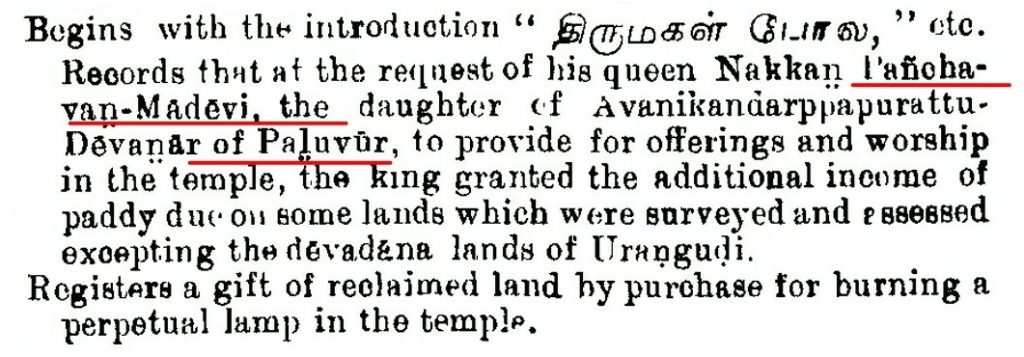
ஆட்சி
இராசராசன் காலத்தில் சிறப்புற்று விளங்கிய பழுவூர் குறுநில மன்னன், அடிகள் பழுவேட்டரையர் கண்டன் மறவன் என்பவராவார். அவர், சோழப் பேரரசனின் மேலாண்மையை ஏற்றுக் கொண்டு ஆண்டு வந்தார். இச்செய்தியை மேலைப்பழுவூரிலும் கீழைப்பழுவூரிலும் காணப்படும் கல்வெட்டுகள் தெரிவிக்கின்றன. பேரரசனுக்குரிய உரிமைகள் பல அவருக்கு வழங்கப்பட்டிருந்தன. ஏறக்குறைய அனைத்துரிமையும் வாய்ந்த ஒரு தனியரசனாக அவர் விளங்கினார். அவருடைய அதிகாரிகளும் பெருந்தரம், சிறுதரம் என்ற பிரிவினர் இருந்தனர். சோழப்பேரரசின் கீழ் பழுவேட்டரையர்கள் தனிக் கொடி, தனிச் சின்னம் என தன்னாட்சியே நடத்தியுள்ளனர்.
இராஜராஜன் காலத்து குறுநிலமன்னர்களில் அடிகள் பழுவேட்டரையர் கண்டன் மறவன் மிக முக்கியமானவர். சோழவேந்தர்களைப் போல் இவர்களும் பெரும் தரம் அதிகாரிகளை நியமித்தனர்.
இதனை பழுவூரில் கிடைத்த கல்வெட்டு “திருவாலந்துறையுடைய மகாதேவர்க்கு அடிகள் பழுவேட்டரையர் கண்டன்மறவனார் பெருந்திரத்தரையந் சுந்தரசோழநென்” என குறிப்பிடுகிறது. (106 of 1895)

நந்திபுரத்தில் நிலவிய பண்டைய முறைகளின் அடிப்படையில் பழுவூரில் வரி விதிக்கும் முறைகளை பழுவேட்டரையர்கள் ஒழுங்குபடுத்தினர். இது பற்றி குறிப்பிடும் சுந்தர சோழன் காலத்து மேலப்பழுவூர் கல்வெட்டு “பழுவேட்டரையர் மறவன் கண்டனார் அவனிகந்தபுரத்துமன்றுபாடு எப்பெற்பட்டது பண்டைய நந்திபுரமற்றாதியே கொள்க” என குறிப்பிடுகிறது. (Ins 365 of 1924)

இக்கல்வெட்டில் குறிப்பிடப்படும் நந்திபுரம் திருவையாறில் அமைந்துள்ள கண்டியூர் எனும் ஊராகும். பல்லவர் காலம் முதல் இவ்வூர் முக்கியத்துவம் பெற்று விளங்கியது. சுந்தர சோழன் “நந்திபுரத்து சுந்தரசோழன்” என போற்றப்படும் அளவுக்கு நந்திபுரம் சோழர் வரலாற்றில் முக்கியத்துவம் பெற்று விளங்கியுள்ளது.
பழுவேட்டரையர் படை
தஞ்சையில் முத்தரையர்களுடன் நடந்த போரில் சோழ மன்னன் விஜயாலசோழனுக்கு ஆதரவாக சேரமான் குலசேகர கண்டன் பழுவேட்டரையர் போரிட்டார். விஷம் தடவப்பட்ட எதிரிகளின் அம்புகள் தைத்ததில் இருவரின் கால்களும் செயல் இழந்தது என்பது வரலாற்று தகவலாகும்.
கிபி 879ல் இரண்டாம் வரகுண பாண்டியனுக்கும் பல்லவருக்கும் நடந்த திருப்புறம்பயம் போரில் குலசேகர கண்டன் பழுவேட்டரையரின் புதல்வர்களான குலசேகர விக்ரம பழுவேட்டரையரும், பழுவேட்டரையர் கண்டன்அமுதனாரும் விஜயாலயசோழனுக்கு ஆதரவாக பல்லவர் அணியில் போர்க்களம் கண்டனர்.
ஆதித்தசோழனின் கொங்கு நாட்டு படையெடுப்புகளில் பழுவேட்டரையர்கள் முக்கிய பங்கு வகித்துள்ளனர். முதலாம் பராந்தகன் காலத்தில் நடந்த தக்கோலப் போரில் பழுவேட்டரையர் விக்ரம கண்டன்அமுதனார் சோழர்களுக்காக போரிட்டார்.
கிபி 915 ஆம் ஆண்டளவில் முதலாம் பராந்தக சோழன் காலத்தில் பாண்டிய நாட்டில் வெள்ளளூர் எனும் இடத்தில் நடைபெற்ற போரில் பாண்டியர் இராசசிம்மன் மற்றும் ஈழப்படைகளை எதிர்த்து பழுவேட்டரையர் கண்டன்அமுதனார் தலைமையிலான சோழர் படை வெற்றி அடைந்தது. இவ்வெற்றியின் நினைவாக நக்கன் சாத்தன் என்பவர் சிறுபழுவூரில் இருந்த திருவளந்துறை சிவன் கோயிலுக்கு நந்தா விளக்கு எரிக்க ஆடுகளை தானமாக அளித்துள்ளார். (கல்வெட்டு எண் 231 of 1926)

முதலாம் பராந்தகன் காலத்தில் நடந்த தக்கோலப் போரில் பழுவேட்டரையர் விக்ரமகண்டனார் சோழர்களுக்காக போரிட்டார்.

சோழப் பேரரசின் நிர்வாகத்தில் தலைமை பொறுப்பை வகித்த பழுவேட்டரையர்கள் தங்களுக்கென்று தனியாக படையையும்கொண்டிருத்தனர். கீழப்பழுவூர் சிவன் கோயிலில் கிடைத்த கல்வெட்டு “பழுவேட்டரையர் கண்டன்மறவனார் படை” என குறிப்பிடுகிறது. பழுவூரில் பழுவேட்டரையர்கள் தலைமையிலான படை இருந்ததை இக்கல்வெட்டுகுறிப்பிடுகிறது. (Ins 109 of 1895)
திருப்பணிகள்
சோழப்பேரரசின் முக்கிய அங்கமான பழுவேட்டரையர்கள் பல்வேறு திருப்பணிகளை செய்து புகழ் பெற்றனர். அவற்றில் சில தகவல்களை காண்போம்…

பழுவூர் அரசர் அடிகள் பழுவேட்டரையர் கண்டன்மறவனார் முதலாம் ராசராசன் காலத்தில் மேலப்பழுவூரில் திருத்தோற்றம் உடையாருக்கு ஒரு கோயிலைஎடுப்பித்தார். (Ins 394 of 1924)
“பழுவேட்டரையர் கண்டன் மறவன் எடுப்பித்த ஸ்ரீகோயில்” எனும் கல்வெட்டு வரிகள் மேலப்பழுவூர் சிவன் கோயிலில் கிடைக்கின்றது. (Ins 394 of 1924)

கீழப்பழுவூரில் உள்ள கோயிலான மறவனீச்சுவரம் எனும்பசுபதீஸ்வரம் பழுவேட்டரையர் மறவன்கண்டனாரால் கட்டப்பட்டதாகும்.
முதலாம் பராந்தகனின் பன்னிரண்டாம் ஆட்சியாண்டில் பழுவேட்டரையர் மகளான நம்பிராட்டியார் அருள்மொழிநங்கை தனது பணியாள் குணவன் மூலம், கீழப்பழுவூர் சிவன் கோயிலுக்கு பன்னிரண்டு கழஞ்சு பொன்னை தானமாக அளித்துள்ளார். (Ins 299 of 1901)
சுந்தரசோழனின் பன்னிரண்டாம் ஆட்சியாண்டில் அடிகள் பழுவேட்டரையர் மறவன்கண்டன் கீழப்பழுவூர் சிவன் கோயிலில் விளக்கு எரிப்பதற்கு 90 ஆடுகளை தானமாக அளித்துள்ளார். (Ins 229 of 1926)
சுந்தரசோழனின் பதினாராம் ஆட்சியாண்டில் அடிகள் பழுவேட்டரையர் கீழப்பழுவூர் சிவன் கோயிலில் விளக்கு எரிப்பதற்கு பொன்னை தானமாக அளித்துள்ளார். (Ins 373 of 1924)
உத்தமசோழரின் இரண்டாம் ஆண்டு ஆட்சியில் உடையார்குடியில் உள்ள வீரநாராயணசுவாமி கோயிலுக்கு பழுவேட்டரையர் கோதண்டனார் 12.5 கழஞ்சு தங்கத்தை கொடையாக அளித்துள்ளார். (Ins 609 of 1920)
உத்தம சோழனின் ஐந்தாம் ஆட்சியாண்டில் லால்குடி சப்தரீஸ்வரர் கோயிலுக்கு அடிகள் பழுவேட்டரையர் குமரன் மறவன் 30 கழஞ்சு பொன்னை தானமாக அளித்துள்ளார். (Ins 117 of 1929)
உத்தமசோழனின் எட்டாம் ஆட்சியாண்டில் பழுவேட்டரையர் விக்ரமாதித்தியரின் மனைவி ராமன் கோவியார் கீழப்பழுவூர் சிவன் கோயிலுக்கு பன்னிரண்டு ஆடுகளை தானமாக அளித்துள்ளார். (Ins 237 of 1926)
உத்தம சோழனின் பன்னிரெண்டாம் ஆட்சியாண்டில் உடையார்குடி சிவன் கோயிலுக்கு அடிகள் பழுவேட்டரையர் சுந்தரசோழன் தனது சகோதரன் கண்டன் சத்ருபயங்கரனுக்காக நிலதானம் அளித்துள்ளார். (Ins 592 of 1920)
உத்தம சோழனின் பதினாறாம் ஆட்சியாண்டில் ஆடுதுறை சிவன் கோயிலுக்கு பழுவேட்டரையர் கண்டன்மறவனார் விளக்கு எரிக்க தானம் அளித்துள்ளார். (Ins 395 of 1924)
பத்தாம் நூற்றாண்டை சேர்ந்த மற்றொரு கல்வெட்டில் கீழப்பழுவூர் சிவன் கோயிலுக்கு அடிகள் பழுவேட்டரையர் கண்டன்மறவனாரின் மாமனான மழவர் கொங்கணி சென்னிநம்பியார் விளக்கு எரிப்பதற்கு நிலதானம்அளித்துள்ளார். (Ins 249 of 1926)
பத்தாம் நூற்றாண்டைச் சேர்ந்த கல்வெட்டில் கீழப்பழுவூர் சிவன் கோயிலுக்கு பழுவேட்டரையர் கண்டன்மறவனார் நிலங்களை தானமாகஅளித்துள்ளார். (Ins 219 of 1926)
கீழப்பழுவூர் சிவன் கோயிலுக்கு அடிகள் பழுவேட்டரையர் கண்டன்சுந்தரசோழனார் 180 ஆடுகளை தானமாக கொடுத்துள்ளார். (Ins 120 of 1895)
கீழப்பழுவூர் சிவன் கோயிலுக்கு அடிகள் பழுவேட்டரையர் கண்டன் மறவன் இரு தங்க ஆபரணங்கள் அளித்ததை ராசராசனின் மூன்றாம் ஆட்சியாண்டு கல்வெட்டு குறிப்பிடுகிறது. (Ins 111 of 1895)
கீழப்பழுவூர் சிவன் கோயிலுக்கு அடிகள் பழுவேட்டரையர் கண்டன்மாறனாரின் மனைவி நில தானம் அளித்ததை ராசராசனின் ஏழாம் ஆட்சியாண்டு கல்வெட்டு குறிப்பிடுகிறது. (Ins 226 of 1926)
பிற்கால சோழப்பேரரசின் எழுச்சிக்கு வித்திட்ட பழுவேட்டரையர்கள் கிபி பதினோறாம் நூற்றாண்டு வரையிலும் மிகவும் உன்னத நிலையில் இருந்ததை கல்வெட்டுகள் நமக்கு உணர்த்துகின்றன. பழம்பெருமை வாய்ந்த பழுவேட்டரையர்கள் வம்சாவளியில் வந்த மதிப்பிற்குரிய திரு. அர.க. விக்ரமகர்ணபழுவேட்டரையர் குடும்பத்தினர் திருச்சியில் இன்றும் தங்களது பழம்பெருமை மாறாது கலாச்சாரக்காவலர்களாக வாழ்ந்து வருவது குறிப்பிடத்தக்கது.
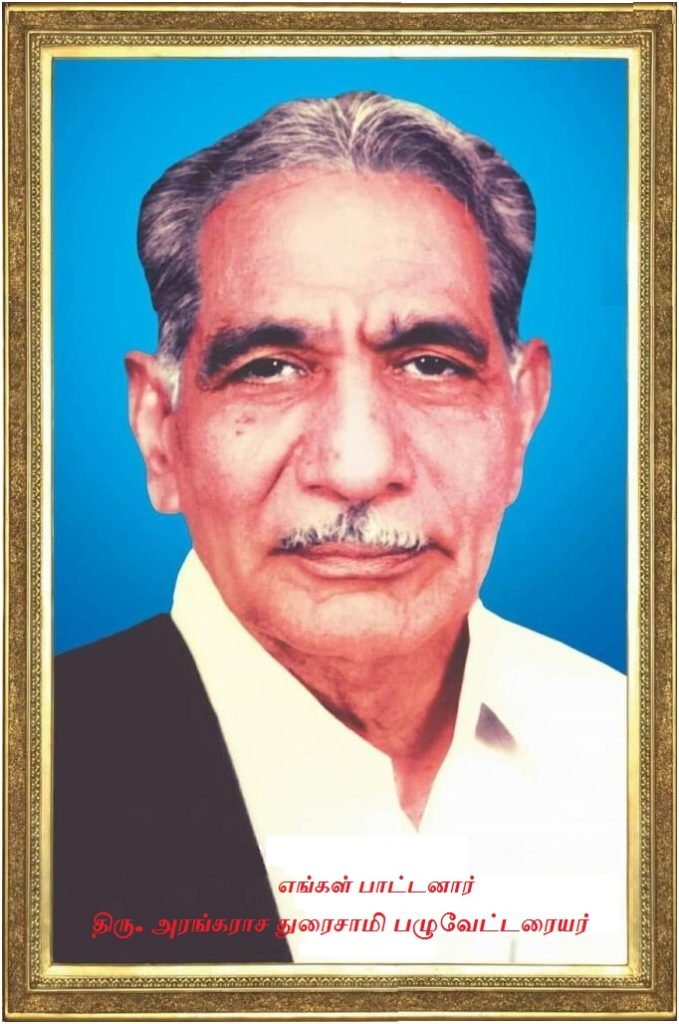
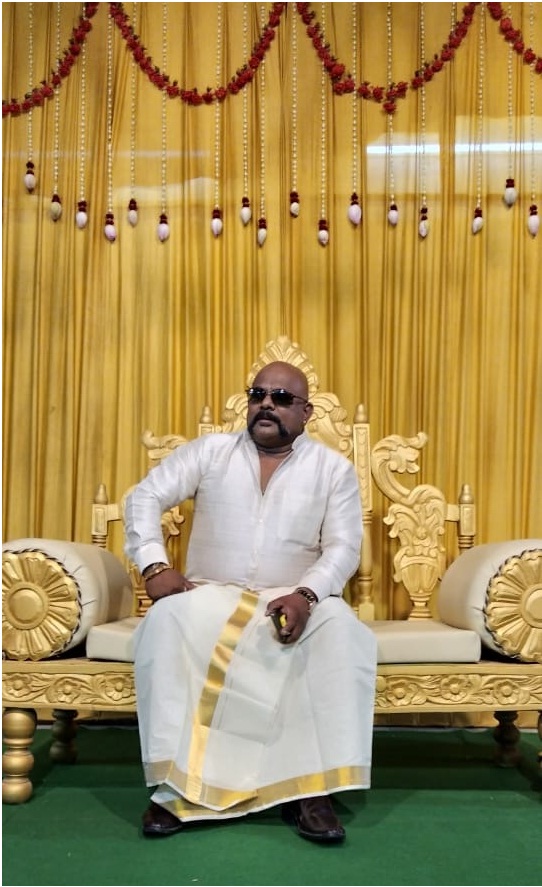
பழுவேட்டரையர் மரபினர் குறித்த வரலாற்று தகவல்களை அளித்து உதவிய வாழும் பழுவூர் அரசர் அர. க. விக்ரம கர்ணபழுவேட்டரையர் அவர்களுக்கு நெஞ்சார்ந்த நன்றிகள், விரைவில் பழுவேட்டரையர் அவர்களால் வெளியிடப்பட இருக்கும் “உய்யங்கொண்டான்” எனும் வரலாற்று நாவலில் பழுவேட்டரையர்கள் மற்றும் சோழர்களின் பல அரிய வரலாற்று தகவல்கள் உலகிற்கு வெளிப்படும்.
நன்றி,
சு. சியாம் சுந்தர் சம்பட்டியார்
B.Sc Nautical science
(இனக்குழு வரலாற்று ஆராய்ச்சி)
